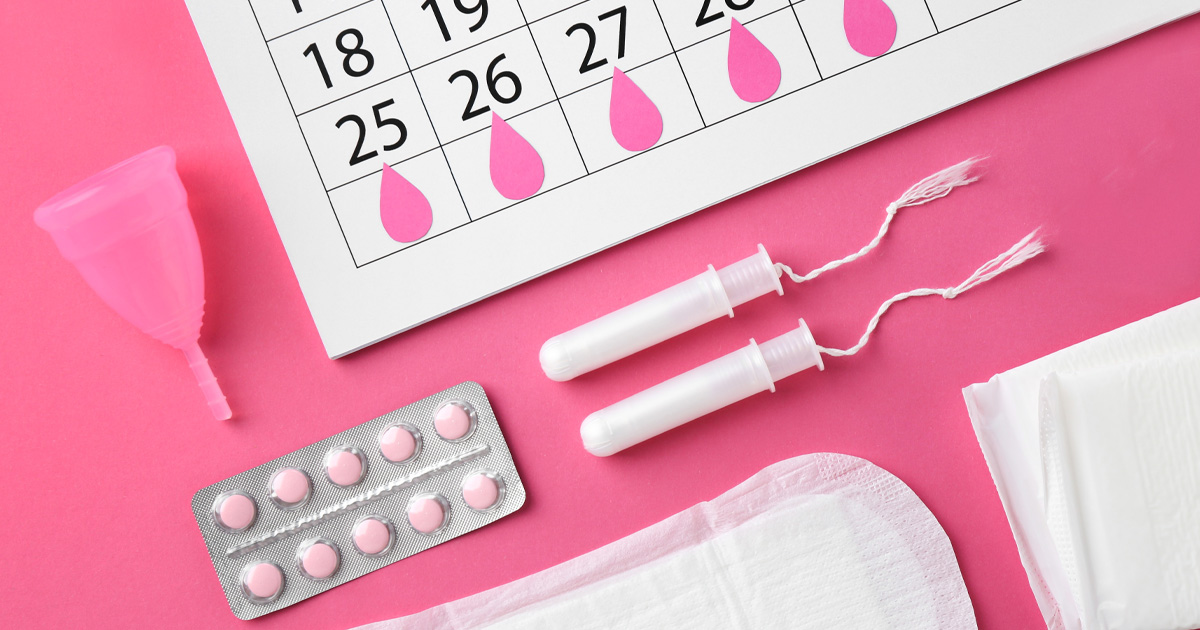
Gynecology, Self-care
How To Maintain A Healthy Vaginal pH—And Why It Really Matters
In our latest series, “What’s Up, Down There,” we’re covering important vaginal health topics you might not have learned in health class. In this issue, we’re exploring the science behind your vaginal pH, and why it matters.
You’ve heard of the gut microbiome, but did you know that your vagina has its own microbiome, too? The vaginal microbiome, or vaginal flora, is a fancy way of describing the millions of bacteria that live down there. While you may think of bacteria as a bad thing, the truth is, there are plenty of good bacteria that help in warding off infections. The key to maintaining a healthy vaginal flora and preventing infections comes down to two letters: pH.
What is a normal vaginal pH?
If you remember from high school chemistry class, the pH scale measures the acidity or alkalinity of a substance on a scale from 0 to 14 – the lower the number, the more acidic. A substance like water, for example, is a neutral 7. A healthy vaginal pH should be between 3.8 – 4.5, which is somewhat acidic. Fun fact: that’s about the same acidity level as a tomato!
When we have enough good bacteria, known as Lactobacilli, it produces substances like lactic acid and hydrogen peroxide. This creates an acidic environment that prevents bad bacteria like e. Coli, Staph, and Candida from growing.
How do I know if my vaginal pH is off?
If you’re experiencing uncomfortable symptoms like unusual discharge, itching, and burning when you urinate, your vaginal pH may be off balance.
An unbalanced pH can lead to vaginal infections including yeast infections or bacterial vaginosis (BV). These infections are incredibly common, and therefore worth watching out for. In fact, up to 75% of women will get at least one yeast infection in their lifetime, and 1 in 3 women will experience bacterial vaginosis. While these two infections often have similar symptoms, there are some slight differences to help you tell them apart.
With a yeast infection, you will typically experience thick, white, and lumpy discharge. With bacterial vaginosis, you will notice a thin, grayish-white vaginal discharge and a strong “fishy” odor.
You may have seen over-the-counter tests that measure your pH levels, and while helpful, these tests cannot diagnose a yeast infection or BV. If you’re experiencing symptoms, it’s best to consult with your Axia Women’s Health provider who can help identify the culprit and determine the best treatment.
Most of all, it’s important not to ignore your symptoms. If left untreated, these infections could lead to more long-term health consequences like pelvic inflammatory disease (PID) that can cause infertility.
What can disrupt my vaginal pH?
Normally, you don’t have to worry about your pH levels as a healthy vagina can regulate and balance itself. However, there are some triggers that can raise your vaginal pH levels:
- Antibiotics: Taking antibiotics for any type of infection not only kills the bad bacteria, but unfortunately can take with it the good bacteria, too.
- Douching: Using any type of douching product or fragranced wash that claims to “clean” your vagina, can actually rid it of the good bacteria it needs.
- Unprotected Sex: Semen is an alkaline substance with a pH level between 7.1 to 8, which can disrupt the vagina’s natural acidic environment if you have unprotected sex.
Other things like being on your period, taking hormonal birth control, and going through menopause can also affect your pH levels. When your vaginal pH is higher, or less acidic, bacteria are more likely to thrive and potentially cause infection.
How to maintain a healthy vaginal pH
Many believe a healthy diet and staying hydrated can help you maintain a healthy vaginal pH. There are also some other simple steps you can take to keep your pH in check and support a healthy vagina:
- Invest in a good probiotic: Taking a daily over-the-counter vaginal probiotic supplement can help restore the good bacteria you need. If you’re on antibiotics or are prone to recurrent UTIs or other vaginal infections, it’s a good idea to incorporate a vaginal probiotic into your daily routine.
- Never ever douche: Your vagina is self-cleaning. While it’s natural to want to feel fresh down there, there’s no need to overdo it with heavy washes.
- Maintain good hygiene: Always wipe from front to back to prevent the spread of bacteria, and shower regularly with a gentle, non-fragranced soap.
- Use protection during sex: For heterosexual couples, using barrier protection methods (i.e., condoms) is the best way to protect vaginal pH levels as well as prevent against sexually transmitted infections (STIs).
- Wear breathable cotton underwear: Synthetic fabrics can trap moisture and create a breeding ground for bacteria that can throw off your pH. Avoiding thongs, going commando at night, and wearing cotton underwear when possible is best for allowing your vagina to breathe.
- See your gynecologist regularly: Another great way to stay on top of your vaginal health is making regular appointments with your gynecologist. He/she can answer any medical questions and give you more personalized advice!
It’s worth noting that every woman’s body is different, and some of us may be more naturally prone to pH imbalances than others. By taking the proper precautions listed above, knowing your body, and regularly checking-in with your healthcare provider, you can keep your vagina healthy and happy!


































































